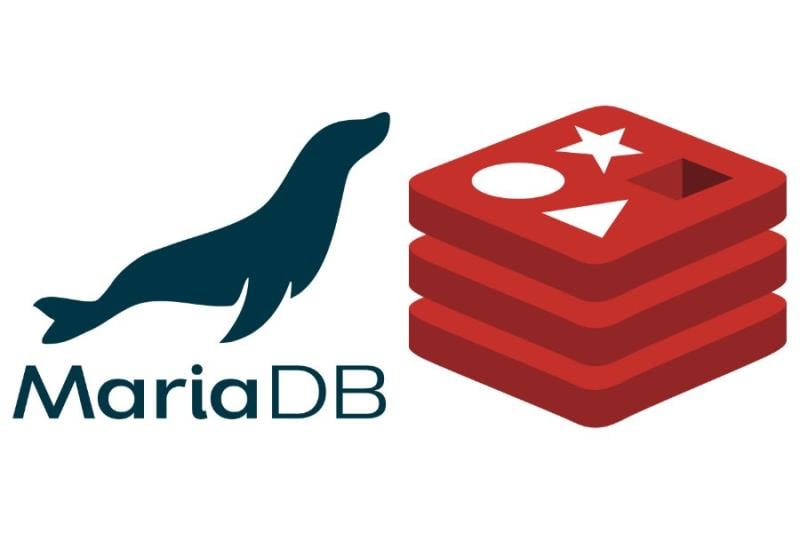MariaDB and Redis are open-source database management systems, but they are used for different things and are built differently. MariaDB is a relational database management system (RDBMS) that uses SQL to query and organise data in tables with predefined schemas. It is a popular choice for web applications and transactional systems because it is ACID-compliant and has strong consistency.
On the other hand, Redis is a key-value store and in-memory data structure server made for applications that need high performance and low latency. It works with different data structures, such as strings, hashes, lists, sets, and sorted sets. Redis is great at caching, real-time analytics, and messaging systems. It can read and write data quickly, but it doesn’t guarantee consistency as well as MariaDB does.
What is MariaDB?
MariaDB is an open-source relational database management system (RDBMS) created after Oracle bought the popular MySQL database. MariaDB was made by the people who made MySQL, so it works with MySQL and has the same features. It also runs faster and has better security. Structured Query Language (SQL) is used to manage and query data. The data is organised into tables with predefined schemas based on the relationships between entities.
As an RDBMS, MariaDB complies with ACID (Atomicity, Consistency, Isolation, Durability), ensuring that transaction processing is reliable and consistent. It works with different storage engines, like InnoDB, MyRocks, and Aria, so users can choose the one that works best for their needs. MariaDB also supports replication, which lets data be spread across multiple nodes for backup, high availability, and load balancing.
MariaDB is used in many web apps, enterprise systems, and data warehousing solutions. It’s an excellent alternative to MySQL because it’s open source, still being developed, and has been improved by the community. It is a popular choice for organisations of all sizes, including those with large-scale deployments and mission-critical applications, because it is flexible, stable, and scalable.
What is Redis?
Redis, which stands for “Remote Dictionary Server,” is an open-source, in-memory data structure store that works as a key-value database, cache, and message broker. It is made to have high performance, low latency, and be easy to use. This makes it a good choice for applications that need to read and write data quickly and in real-time.
Redis is different from traditional relational databases because it stores data in memory. This makes it easy to access and modify data quickly. It works with many types of data structures, such as strings, hashes, lists, sets, sorted sets, and geospatial indexes, so that it can be used in many different situations. Redis is often used in gaming applications for caching, real-time analytics, session management, message queuing, and leaderboards.
Redis keeps data even after a crash or restart using snapshotting or append-only file (AOF) logging. This keeps data safe even if the server crashes or restarts. Redis also supports replication, which lets data be spread across multiple nodes to improve availability, reliability, and scalability.
Redis is a popular choice for developers and businesses that want to improve application responsiveness, offload database workloads, or add real-time features because it is small and fast. It is widely used in many industries and use cases because it is easy to use, has many uses, and has strong community support.
Difference Between MariaDB and Redis
MariaDB and Redis are fundamentally different databases because of their distinctive architectures, data storage and organisation, applications, and performance.
Architecture
MariaDB is an RDBMS, which means it stores and organises information using tables with preset schemas determined by the relationships between entities. It employs Structured Query Language (SQL) to handle and query data. In contrast, Redis is a multi-purpose in-memory data structure store that may be used as a key-value database, cache, and message broker.
Data Storage and Organization
MariaDB is suited for transactional systems due to its reliable disk-based storage and ACID (Atomicity, Consistency, Isolation, Durability) compliance. Redis uses memory storage, which allows for fast data access and manipulation but provides less reliable consistency assurances than MariaDB.
Use Cases
MariaDB is widely used in complicated querying and transactional processing solutions, including online applications, enterprise systems, and data warehousing. Redis excels in environments where high performance and low latency are essential, such as real-time data processing, caching, session management, message queuing, and analytics.
Performance
MariaDB’s read/write performance is excellent, but disk-based storage may make it slower than Redis in some situations. Redis’ in-memory architecture and low resource requirements make it ideal for applications that require frequent read/write operations.
In conclusion, MariaDB is better suited for relational data management and transaction processing, while Redis shines in high-performance, low-latency applications due to its architecture, data storage methods, and use cases.






